Distemper Paint & Emulsion Paint
Most of us are bit confused, whether to go for Distemper Paint or Emulsion Paint for house painting. In this blog, you will get to know what exactly distemper paint and emulsion paint is, both the advantages and disadvantages of Distemper Paint and Emulsion Paint. We will be explaining the basic difference between Distemper Paint and Emulsion Paint and we will also try to throw some lights on the pros and cons of each. Also, in the later sections we will explain how to apply distemper paint on wall and how to apply emulsion paint on walls.
Distemper paint is an ancient type of paint made of water, chalk, and pigment. It is bound with either an animal glue or the adhesive qualities of casein, a resin that comes from solidified milk.
The basic constituent of Distemper Paint is chalk, lime, and water. Distemper Paint is also known as cement paint. This is called so because such kind of paint can be applied directly on cement walls without any other coating on them without using the primer. They are a cheaper option and they stay good for more than 3 to 4 years. Distemper Paints are used for both interior and exterior walls by painters in Bangalore. They usually need two coatings.
Types of Distemper Paint –
There are three types of Distemper Paint available in market Acrylic Distemper Paint, Synthetic Distemper Paint and UNO Acrylic Distemper Paint.
With over 1000+ shades to choose from, Tractor Acrylic Distemper Paint offers a wide choice of water-based interior wall paints. It is acrylic Distemper Paint of the highest quality and gives the walls a delightful smooth matte finish. It gives unmatched durability and a smooth finish that has no equal in the Distemper Paint category, ensures shade retention for a long time, available in a unique range of 450 bright, attractive shades, a formulation with Acrylic co polymer binder gives an unparalleled performance, Its fast drying property facilitates quicker completion of painting work for house painters across Bangalore.
Tractor Synthetic Distemper Paint is a water-based finish with exciting direct shade offerings that give your home a beautiful look for years to come. It has uniform matt film, which can be wiped with clean water, White can be tinted with apcolite universal strainer to obtain customized shades, The oil bound paint film becomes harder over a period of time, which gives better durability and makes it easy to wash.
Tractor Uno Acrylic Distemper Paint is water based acrylic Distemper Paint suitable for interior walls at a pocket-friendly price. This washable Distemper Paint will keep your walls as good as new for a long time and it is available in more than 950 different shades. Uno Acrylic Distemper Paint offers a smooth, matte finish. Your walls look like new for a longer time as the shades retain their brightness. It is available in a wide range of shades. Thus you can choose your favorite colours for your walls. You can clean your stains with a wet cloth.
Advantages of Distemper Paint
- Distemper Paints doesn’t need any primer quoting can be directly applied on cement surface without any preparations.
- They are less expensive compared to other alternatives.
- They stay long and up to three to five years.
- They have a distinctive smell.
- They don’t dry or crack in sunlight.
Disadvantages of Distemper Paint
- The quality will not be great while compared to other paints.
- Distemper Paint peels off when wet.
- It’s not fully washable.
- Distemper Paint color will fade time being quickly then Emulsion Paint.
An emulsion paint has acrylic resin, (other resins too like SB-Latex, Poly Vinyl Acetate etc) in an emulsion form, acting as a binder or adhesive on the surface. Any paint needs an adhesive which sticks to the surface. Acrylic resin in this paint sticks to the surface and holds the other ingredients in place after drying. A paint contains Pigments, (which give the color and protection from UV light to it), Solvents (which either dissolve some portion or improve the flow of paint) and finally various Additives (like anti skinning agent, anti-settling agents and surface active agents.)
Emulsion Paint typically consists of pigment, resin, solvent, and additives. Emulsion Paint is water based paint. As compared to oil-based paint, working with Emulsion Paint is far better. Many homeowners find it efficient and suitable for their home. There are many benefits of applying Emulsion Paint on walls like it’s easy to clean and maintain and it avoids the potent odors that come from the oil-based paints.
Types of Emulsion Paint –
There are three types of Emulsion Paint available in market.
- Vinyl soft sheen
- Vinyl matte
- Vinyl silk
Each and every type of Emulsion Paint finish has its own advantage. The matte Emulsion Paints helps in hiding the imperfection on the walls. Vinyl soft sheen Emulsion Paint helps in offering longer durability. It is among the list of highly durable material that is efficient in handling high moisture areas as compared to the other two. But when it comes to the glossiness, it tends to increase and grab the attention over the imperfection on the walls.
Mid sheen emulsion that withstands normal levels of humidity and can be wiped clean. Vinyl soft sheen Emulsion Paint helps in offering longer durability. It is among the list of highly durable material that is efficient in handling high moisture areas as compared to the other two.
Vinyl matt is more hard-wearing and resistant to damage. When a paint is ‘vinyl’, it means that there has been a certain resin added to the paint. A similar kind of resin is often added to acrylic paints for a similar effect.
Vinyl Matt emulsion is a wall and ceiling paint which is extremely easy to apply. Since, it is water-based, it can easily be applied to almost any smooth surface. Since, it is Matt, it will also provide a flat, non-reflective finish which is ideal for masking any existing surface imperfections.
This kind of emulsion paint is ideal for use in domestic and lighter commercial environments. Although it is extremely easy to apply, it can be marked fairly easily. As such, it is most effective when employed in light-wear areas across your property. This can include:
- Ceilings.
- Dining Rooms.
- Bedrooms.
- Sitting Rooms.
Vinyl Silk Emulsion is a type of paint composed of pigments ground up in a varnish medium and durable finish. Vinyl silk paints are generally low-odour and has a slower drying time. But they do have the added advantage of being able to clean your brushes in water.
Advantages of Emulsion Paint
- Emulsion Paint stays longer then Distemper Paint up to four to five years.
- Emulsion Paint has the attractive smell.
- They don’t dry or crack in sunlight.
- The quality and finishing is better while compared to Distemper Paints
- Emulsion Paint won’t peels off when wet.
- It’s washable and color won’t be fading in time being.
Disadvantages of Emulsion Paint
- Emulsion Paints are expensive compared to Distemper Paints.
- Emulsion Paint needs primer and putty quoting before applying on the wall.
You can call or Whatsapp us on 8884714777.
How to apply Distemper Paint on wall?
The method of applying distemper paints is different for a new surface and an old surface.
New Surface Preparation:
- If you want to paint a newly plastered wall, allow it to cure completely. As manufacturer recommend to allow 28 days as curing time for new masonry. However, allow moisture to dry completely 3 to 6 month period desired depending upon local climate where there is a high humidity.
- Remove the loose particles, dust, dirt, grease, wax, mortar dropping, etc. with the help of wire brush or putty knife.
- Wiped off the whole surface with the help of the dry cloth.
Old Surface Preparation:
- Remove the loose particles, dust, dirt, grease, wax, mortar dropping, and growth of fungus, algae, dampness, etc. with the help of wire brush or putty knife.
- Rubbed the old surface thoroughly with sandpaper. Wash the whole surface and leave for drying.
- Fill the holes and cracks (up to 3 mm) with the putty or gypsum and leave for hardening.
- Sand the wall with the sandpaper to make a smooth surface and wipe off the dust with the dry cloth.
How to apply Emulsion paint on wall?
The process of applying Emulsion Paint on walls:
Step 1: There are many things you’ll be in need of. You’ll require a base coat of white Emulsion Paint surplus to that an overcoat of any color you like to apply on the walls. It is important to select the right type of overcoat because only the overcoat will be seen.
Step 2: When you’re applying or purchasing the white Emulsion Paint base coat, it’s advisable for purchasing matte finished. The overcoat can be anyone among the three but if the base coat is matte, it helps in increasing the glow of the overcoat applied on the walls. In place of base-coat, Emulsion Paint primer can apply so it will stick to the wall for a longer time and give a better finish.
Step 3: Before you move ahead, it is advised to clean the surface of the walls. Remove any decorations on the walls and even the furniture. As you’re painting the walls, cover the surface of the floor by using a plastic material cover. It will not damage the floors. Apply the painter’s tape on the edges of the floors, ceiling and the skirting boards. It’s easy to remove it and helps in protecting the parts of the home from Emulsion Paint
Step 4: Now, it’s the time to clean the walls. Start scrubbing the wall by using mild detergent and warm water solution on a clean cloth. Damp the cloth and rub it on the surface. It will remove the oils from its surface. After applying it, let it rest for some while and rinse it off with clean water.
Step 5: Even you can rinse, dry and scrub the walls by using a clean rag. But, make sure of drying the walls before you start applying Emulsion Paint. As Emulsion Paint is water-based paint, so applying it to the water-based surface might not properly adhere to the surface.
Step 6: Don’t forget to sand the walls. If your current wall surface is shiny, smooth or glossy, rub and scrub the surface by using 50-grit sandpaper. It will help the Emulsion Paint adhere to the surface smoothly. Wrap the sandpaper around the cork block and gradually work on the wall surface. After completing this step, make the use of small bristle brush from sweeping off accumulated dust and debris from the walls.
Step 7: Now you can go ahead with 1st coat of primer and wait till it’s dry and then apply 2nd coat of primer and wait till 2nd coat of primer dried off. Now, apply the basecoat similarly by cutting in the seams using a paint brush and then apply the paint on the remaining surface by using a roller. It’s advisable for drying the basecoat thoroughly say for at least a day and then apply the overcoat. Even, you might need to apply more than one coat of Emulsion Paint, but make sure that each coat is dried completely before applying another one. Let the basecoat dry completely before applying the overcoat. If you’re going with dark colors, you’ll need more coats of basecoat. And for light paint, one or two coats of basecoat are practicable.
Step 8: You’ll need only a light coat of paint. For getting rid of excessive paint, roll the roller again on the platform of the tray. Follow a specific motion while using a roller for applying the Emulsion Paint on the surface. Work either in M shape or in W shape.
Step 9: Start with the bottom and rise towards the upward direction and so on. Repeat the diagonal strikes for painting the walls. Change the angle and cover the entire area of the wall. At last, attach some final touches and here you go with best application process of applying Emulsion Paint on the walls.
Find House Painters in Bangalore with super professional House Painting Service at your doorstep with Yes Painter.
Frequently Asked Question (FAQ)
MDF is sometimes pre-primed, but if yours isn’t, you’ll need to prime the surface before painting. Water-based primers, such as emulsion paint or a proprietary acrylic primer, can be used.
Moreover, paint or emulsion adheres to primer better than it does to the bare wood surface. In addition to providing a uniform surface, undercoating woodwork may help preserve it and prevent strong or underlying colors from showing through to the topcoat.
As a basic guideline, two coats of Emulsion paint are necessary, with the woodwork primed and undercoated first, followed by two coats of emulsion on the walls, and then a cautious top coat around the woodwork.
Yes, you can; but, using white initially will save you a little money on materials. However, in most cases, a specific wall primer is not required over solid previously emulsion-painted walls.
Slowly pour in water and properly mix the materials of the distemper paste. Typically, 500-600 mL of water is needed for 1 kilogram of distemper. Apply 2-3 applications using a brush, roller, or spray, allowing 4-6 hours between applications.
Distemper is easily identified. It feels soft and dusty to the touch and will transfer to your hands from the surface of the walls. The disadvantage of this surface treatment is that nothing will stick to it, which is a huge issue when redecorating with wallpaper or paint.
Distemper has historically been a popular interior paint for homes. In reality, it has been used for painting walls and other sorts of house decorating since antiquity. It can be readily marked, but it cannot be wet. Because it is not waterproof, it has almost exclusively been applied to interior surfaces.
The application method for Distemper:
- Set aside the whiting and water mixture.
- To prepare the glue, follow the instructions on the package.
- Heat the glue until it reaches a soupy consistency.
- Whiting and glue should be combined.
- Tint your colors.
- Fine muslin is used to filter the mixture.
- Apply the distemper to the wall and ceiling.
- Take a step back and admire.
Painting walls using distemper paints is easier and faster since they can be applied directly to cement walls without the use of a primer. Despite being affordable and requiring little surface preparation before application, distemper paints have a relatively long life span.
Distemper is a kind of whitewash that appears early in the life cycle. It is easily marked as decorative paint and cannot be wet. It has been used for painting walls and other sorts of house décor since antiquity. Because it is not waterproof, it is often used on interior surfaces.
Distemper paint is also known as cement paint. This is because such paint can be applied directly to cement walls without the use of a primer. Distemper paints are used on both interior and exterior walls.


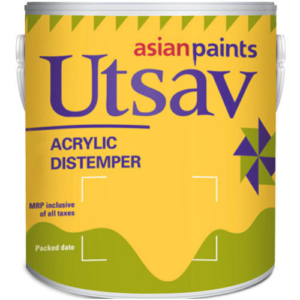
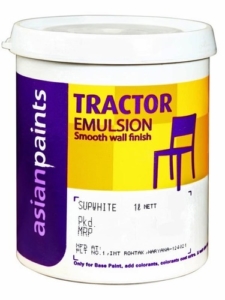



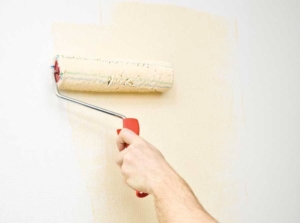
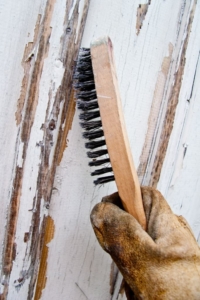
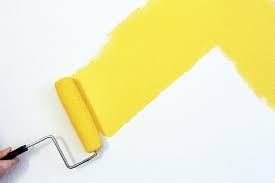
Hi there, this weekend is good in support of me, since this occasion i am reading this fantastic educational paragraph here at my house.
what kind of paint can we use for wood but it should notbe shining
I am sure this paragraph has touched all the internet people, its really really fastidiousparagraph on building up new web site.
Do you have any video of that? I’d care to find
out more details.
Thank you for a wonderful overview and detailing of exterior paint color combinations.I really loved reading your thoughts; obviously you know what you are talking about!Your site is so easy to use too,I’ve bookmark it in my folder.
I found every thing I need to answer here.
We are a family run dive centre in Cyprus, we love your content.
What a great brand of paint. This is a great review.
Angela, only use clear gesso when painting it on a pbn canvas before painting. I do pbn’s a lot and have never used clear gesso before painting because the canvas actually has an opaque gesso coating put on the canvas before the pattern is applied.
Lovely just what I was looking for. Thanks to the author for taking his time on this one.
Very energetic post, I enjoyed that a lot.
can you fix wall paper on distemper painted wall
what kind of paint can we use for wood but it should notbe shining
You may use oil-based wood paint, which comes in satin and matte finish. In Asian paints the product will be Asian paints apcolite premium enamel.
Good information! Thanks for sharing such a fantastic article with us. I hope you keep sharing this kind of helpful article.
Paint prefab homes in Hanamkonda